Share:
Take it offline!
This Education in Motion resource is also available as a printable PDF.
Download PDF
Before a wheelchair user starts using a manual wheelchair, these key points of rear wheel position should be considered. It is essential for wheelchairs to be set up correctly and for wheelchair users to learn proper propulsion techniques. This makes manual propulsion easy - and minimizes the risk of injury.
Set Up and Positioning
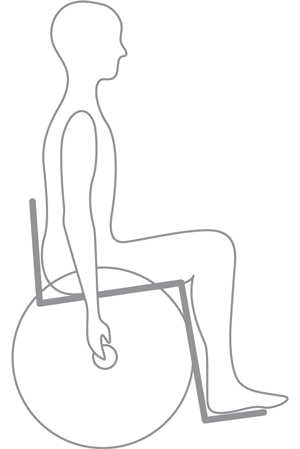
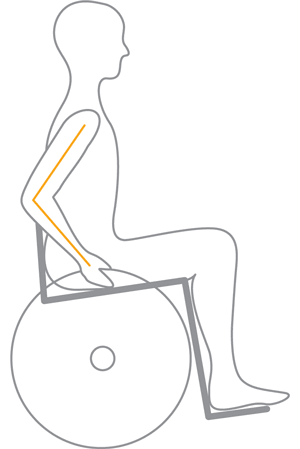
Set Up Elbow Angle
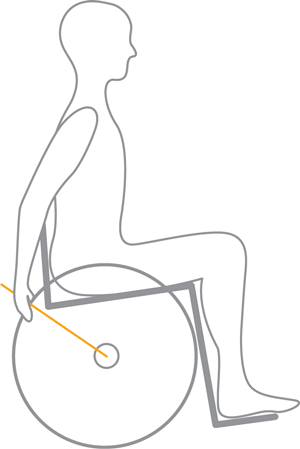
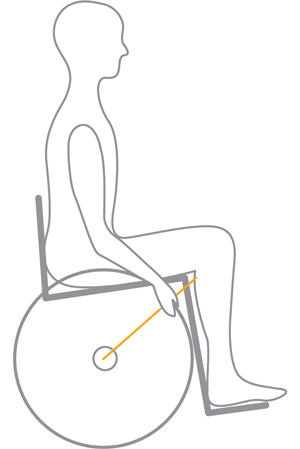
Ten o'clock Two o'clock
Wheelchair users ideally should be seated so that the tip of the middle finger can reach the center of the hub when the upper extremity is in a relaxed position. For most end-users, this will help to ensure that 70-80% of the user's weight is over the rear wheels. It is important to note, however, that each wheelchair set up should be as individual as each wheelchair user and take into account each person's center of mass. Having 70-80% of the user's mass over the rear wheels has a positive impact on:
- Ensuring that when the hand is placed at the center of the handrim, the elbow is at an angle of 100° to 120°. This helps maintain the integrity of the shoulder, elbow, and wrist joints.
- Ensuring that the hand makes contact on the handrim near ten o'clock (10:00) on the clock face, releasing near two o'clock (2:00). This maximizes access to the handrim for the duration of the push.
- Ensuring that the majority of the person's weight is over the rear wheels ensures the wheelchair is easier to push. If the body weight is too far forward on the casters, pushing is more difficult.
- Don't forget camber! Camber, or the lateral angle of the wheels, increases the ease of the push, as it follows the biomechanics of the shoulder while maximizing lateral stability. By adding camber to the rear wheels, this lateral position increases the ease to push and navigate turns.
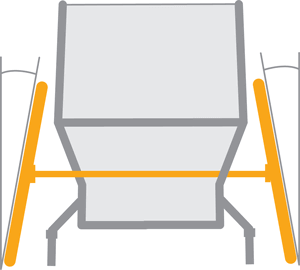
Camber Angle
Propulsion
Propulsion is broken down into two phases: the push phase and the recovery phase. The push phase refers to the time that the user's hand is physically pushing the chair, while the recovery phase (also known as the rest phase) is when the hand is waiting to make contact with the handrim again.
Ideally, the push phase duration = the recovery phase duration
Longer strokes = fewer strokes = less force = less chance of injury
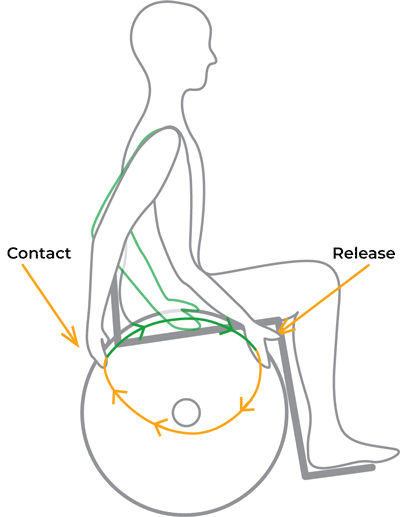
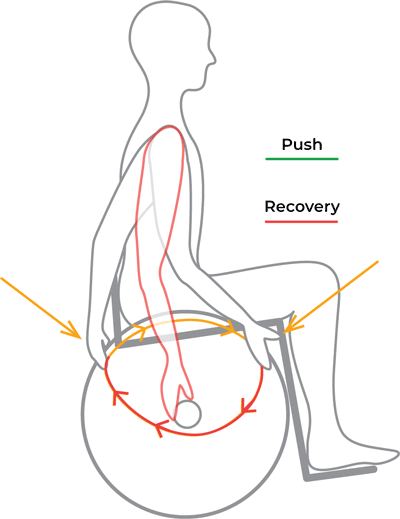
Just like anything we do in life, the ideal push requires education followed by practice! The use of video feedback is a great way for the user to review their propelling technique and to help them implement longer and fewer strokes!